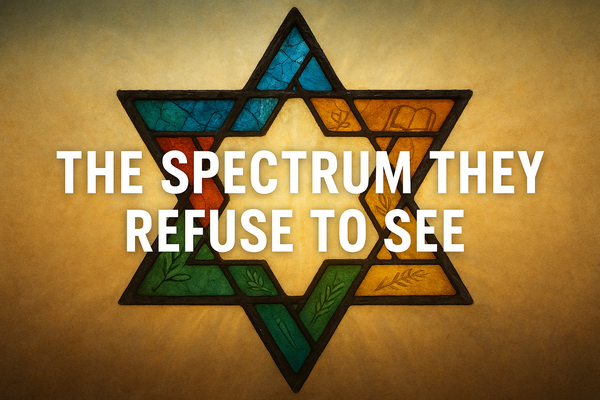Polyamory: Unpacking Motivations, Benefits, and the Persistence of Stigma

This article synthesizes findings from three academic papers exploring consensually non-monogamous (CNM) relationships, with a specific focus on polyamory. While one paper delves into the unique and shared benefits individuals experience in CNM and monogamous relationships, the other two papers center on the diverse motivations driving individuals towards polyamory and the persistent stigma surrounding this relationship style.
The first paper, "Unique and Shared Relationship Benefits of Consensually Non-Monogamous and Monogamous Relationships: A Review and Insights for Moving Forward," by Moors, Matsick, and Schechinger , provides a comprehensive overview of the perceived benefits of CNM relationships, emphasizing the need to move beyond simplistic comparisons with monogamy. The second paper, "Initial Motivations for Engaging in Polyamorous Relationships," authored by Tatum, Flicker, Peralta, and Kubicki, delves into the specific factors motivating individuals to embrace polyamory, drawing on personal narratives and experiences. The third paper, focusing on "How Some Individuals’ Strong Desire for Consensually Non-Monogamous Relationships Shapes Their Choices and Self-Perceptions," by Arter, examines the lived experiences of individuals for whom CNM, particularly polyamory, emerges as a deeply ingrained desire, influencing their choices and self-perceptions.
Distinctive Benefits of Polyamory
Moors et al. identify three unique benefits reported by individuals engaged in polyamorous relationships:
- Diversified need fulfillment: Polyamory allows individuals to have diverse needs met by different partners, fostering a sense of well-being and enriching relationship quality. This challenges the monogamous ideal of one partner fulfilling all needs, acknowledging the complexity of human needs and desires.
- Variety of nonsexual activities: Polyamorous relationships provide a broader spectrum of experiences and activities through expanded social connections, enhancing personal fulfillment and relational satisfaction.
- Individual growth and development: The emphasis on open communication, autonomy, and individual identity within polyamorous relationships encourages personal and interpersonal growth. By challenging societal norms surrounding relationships, polyamorous individuals actively engage in self-discovery, personal development, and resist limiting gender and relationship expectations.
Understanding the Motivations Behind Polyamory
Tatum et al. uncover four primary themes driving individuals towards polyamory:
- Values Alignment: This theme encompasses individuals whose personal values resonate with polyamorous principles. These individuals often express a desire for authentic relationships where they can fully be themselves and resist conforming to societal pressures that mandate monogamy. Notably, some individuals transitioned from other forms of CNM to polyamory, seeking deeper emotional connections that extend beyond purely sexual encounters. This transition often stems from an evolving need for greater relatedness and a desire to cultivate more fulfilling and multifaceted relationships.
- Relationship Factors: Some individuals were motivated by dissatisfaction with their existing monogamous relationship. For some, the shift to polyamory represented an attempt to salvage a struggling relationship. While not always successful in reviving the relationship, this process often led individuals to discover that polyamory resonated with their personal values and relationship preferences, prompting them to continue practicing this relationship style in future relationships. Others were motivated by their partner's interest in exploring polyamory, demonstrating a willingness to adapt and support their partner's desires. This highlights the role of open communication and a commitment to fostering relational growth within polyamorous relationships.
- External Stimuli: Exposure to polyamory through friends, media representation, or developing feelings for someone outside their existing relationship served as a catalyst for some individuals to consider and eventually embrace polyamory. Unexpectedly developing feelings for someone while in a monogamous or other form of CNM relationship prompted individuals to re-evaluate their existing relationship schemas and recognize the possibility of loving multiple people simultaneously. Additionally, positive portrayals of polyamorous relationships in the media, challenging societal stereotypes and presenting alternative relationship models, played a significant role in expanding individuals' perspectives and introducing polyamory as a viable option.
- Sexuality: Some individuals viewed polyamory as an avenue to explore a wider range of sexual experiences and desires, aligning with their inherent sexuality and preferences.
Unpacking the Desire for CNM: Strength, Persistence, and Shaping Choices
Arter's work delves deeper into the experiences of individuals with a strong and enduring desire for CNM relationships. Notably, a significant portion of the participants expressed a deep-seated inclination towards non-monogamy, often describing it as an intrinsic aspect of their being. Many reported feeling this desire from a young age, with some even recounting feeling "wrong" or "broken" when trying to conform to monogamous expectations. This persistent desire for CNM, often present despite societal stigma and potential social repercussions, highlights the significance of recognizing and understanding the experiences of individuals for whom CNM is not simply a choice but a fundamental aspect of their identity.
Furthermore, Arter's research identifies several characteristics commonly associated with this strong desire for CNM:
- Broad and frequent attractions to others: Several participants described experiencing attraction to numerous individuals or a desire to cultivate close connections with multiple people.
- A strong sense of independence and autonomy: Individuals often expressed a deep need for personal freedom and independence within their relationships.
- A dislike of possessiveness and jealousy: Participants often voiced discomfort with feelings of possessiveness and jealousy, viewing them as incompatible with their values and relationship preferences.
These findings collectively suggest that for some individuals, the desire for CNM is not a fleeting preference but a deeply rooted aspect of their personality and relational orientation. This understanding is crucial in challenging the misconception that CNM stems from a fear of commitment or an inability to maintain healthy relationships. Instead, these individuals often seek deeper, more fulfilling connections with multiple partners, prioritizing honesty, communication, and individual growth within their relationships.
Confronting Stigma and Advocating for Inclusivity
All three papers emphasize the critical need to address the pervasive stigma surrounding CNM relationships, particularly polyamory. This stigma manifests in various forms, including negative social perceptions, prejudice, and discrimination. The fact that CNM relationships persist despite these challenges underlines the importance of understanding the motivations and benefits experienced by those who choose this relationship style and advocating for greater societal acceptance and inclusivity.
Several strategies can help dismantle stigma and promote a more inclusive environment for CNM relationships:
- Education and outreach initiatives: Targeting healthcare professionals, therapists, researchers, and educators can help dispel misconceptions and foster a more informed understanding of CNM relationships.
- Increased visibility and positive representation: Encouraging positive and accurate media portrayals of CNM relationships can challenge stereotypes and promote greater acceptance within society.
- Community-based support: Creating inclusive spaces and organizations that support and affirm individuals in CNM relationships is crucial.
- Legal recognition and protection: Advocating for legal recognition of multiple partnerships can help address the institutional disadvantages faced by CNM individuals and families.
By acknowledging the diversity of human relationships and promoting respect and understanding for all individuals, regardless of their relationship choices, we can move towards a more just and equitable society.
Listen to the Podcast






